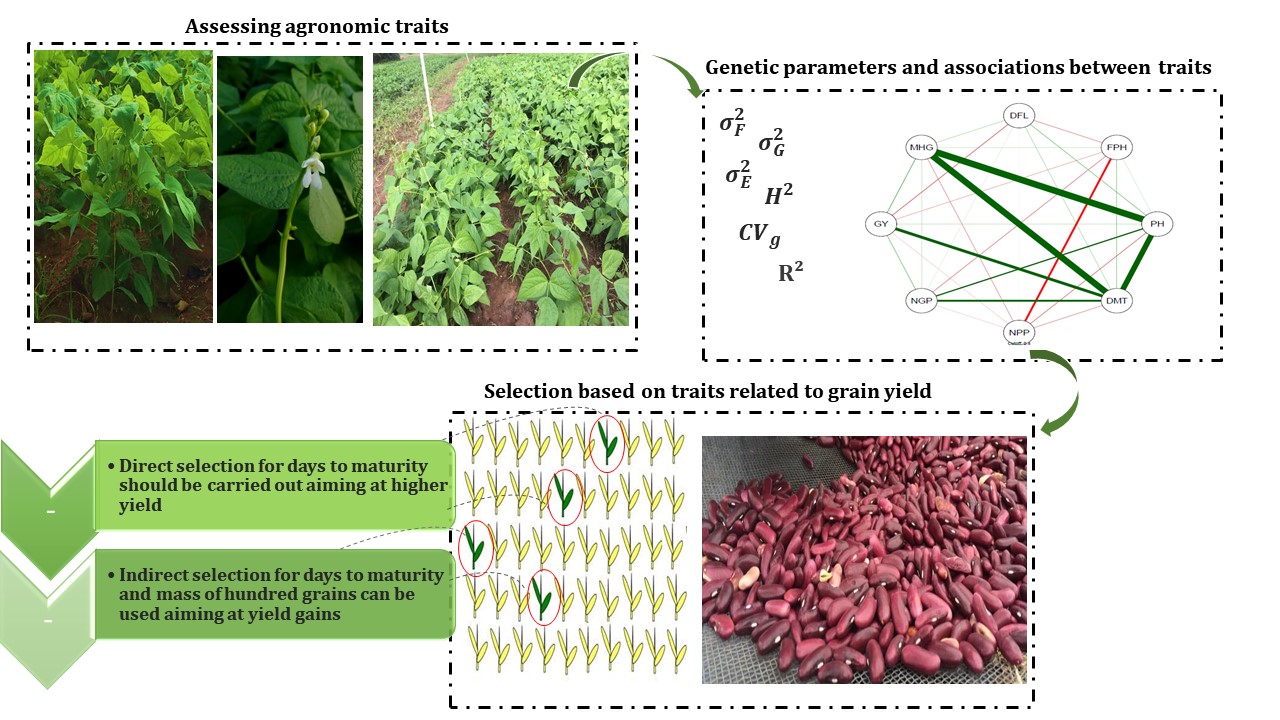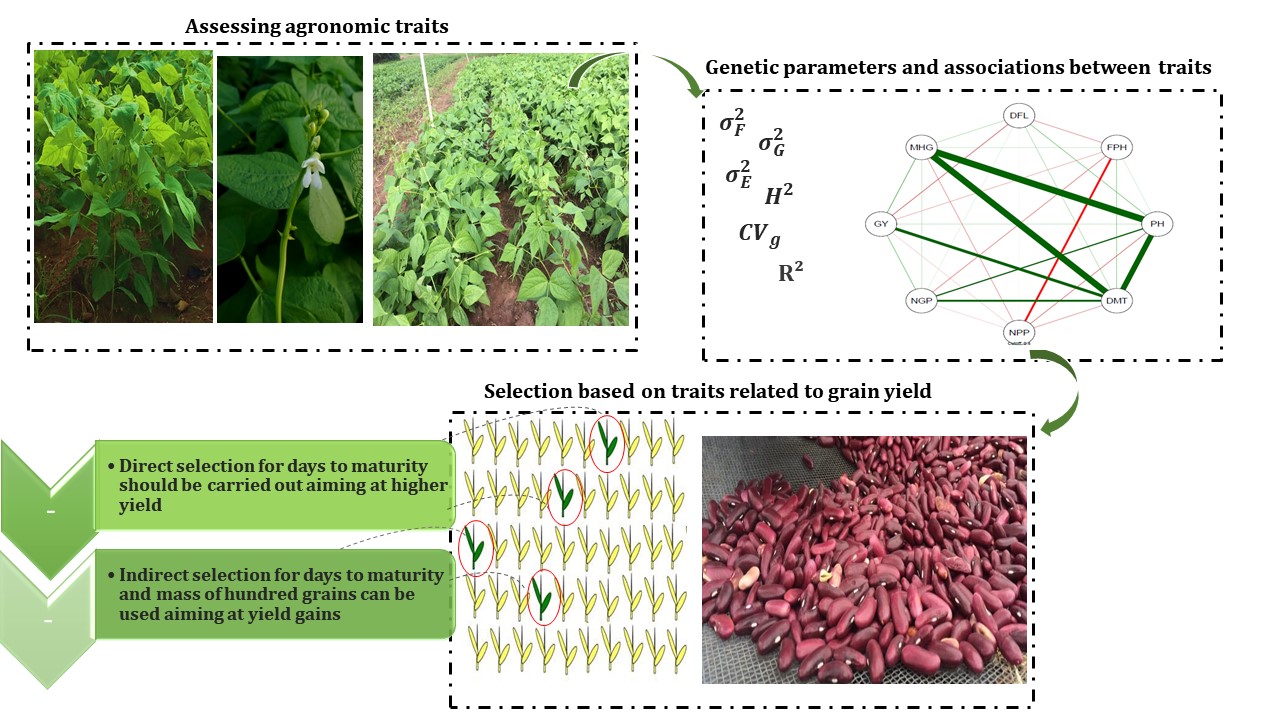Genetic parameters and association between agronomic traits in special-grain common bean (Phaseolus vulgaris L.) genotypes
Palabras clave:
mejoramiento vegetal, correlación genética, análisis de ruta, redimiento de granosResumen

Estimates of genetic parameters allow to determine the genetic variability present in a population, and constitute one of the initial steps in a breeding program. The objectives of this study were to estimate genetic parameters and identify agronomic traits directly and indirectly correlated with the grain yield (GY), as well as to estimate their direct and indirect effects on the yield of special-grain common bean genotypes. The experiment was carried out in the harvest 2016/2017, in complete blocks design with three repetitions. The traits evaluated were: days to flowering, days to maturity, first pod height, plant height, number of pods per plant, number of grains per pod, mass of hundred grain, and grain yield. Data were subjected to analysis of variance, and genetic parameters were estimated followed by phenotypic and genotypic correlations. Phenotypic and genotypic correlations were split into direct and indirect effects by path analysis. The population under study showed to be promising for breeding considering the most traits. There is a positive direct effect of days to maturity on grain yield. The traits days to maturity and mass of hundred grains can be used in the indirect selection aiming at higher grain yield.
Highlights
- There is genetic variability in the population under study, indicating that the population is promising for the selection of agronomic traits.
- Based on genetic parameters, correlations and path analysis, the selection for days to maturity can provide genetic gains for yield at early cycles.
- Direct selection for days to maturity should be carried out aiming at higher yield.
- Indirect selection for days to maturity and mass of hundred grains can be used aiming at yield gains in special-grain common bean.

Descargas
Publicado
Número
Sección
Licencia
Derechos de autor 2020 Revista de la Facultad de Ciencias Agrarias UNCuyo

Esta obra está bajo una licencia internacional Creative Commons Reconocimiento-NoComercial-CompartirIgual 3.0.
Aquellos autores/as que tengan publicaciones con esta revista, aceptan las Políticas Editoriales.



